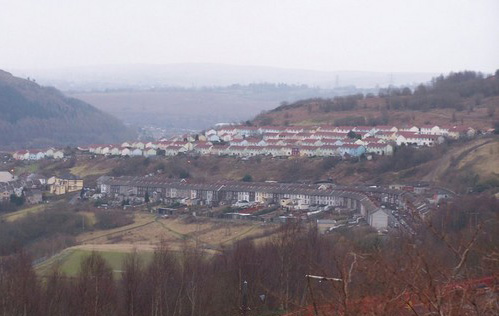
The south Wales valleys are a number of industrialised valleys in South Wales. Many of them running roughly parallel to each other. Located in roughly the centre is the famous Rhondda valley. Until the mid-nineteenth century, the south Wales valleys were lightly inhabited (as was most of Wales) and known for their natural beauty. The Industrial Revolution changed this as the valleys became important centres for both the coal mining and iron industries. Merthyr Tydfil, at the northern end of the Taff valley became Wales's largest town thanks to its growing iron works. Although iron was the first industry to develop, the valleys would become most famous for their coal mines. These attracted huge numbers of people from rural areas to the valleys. This meant that many rows of terraced housing were built along the valley sides to accommodate the influx. The coal mined in the valleys was transported south along railways and canals to ports on the Bristol Channel, notably Cardiff, Newport and Swansea. Cardiff was soon among the most important coal ports in the world and Swansea among the most important steel ports.
Terraced houses nearby Mountain Ash and around twenty five miles north of Cardiff

The Second World War marked the end of these heavy industries in the Valleys. Steel works and coal mines began to close (they were exhausted), despite nationalisation by the UK government. The closure of the heavy industries led to very high unemployment in the valleys and this remains a problem today.
credits:
1. The text was extracted from Wikipedia The Free Encyclopedia under GNU Free Documentation Licence.
2. Photo: Terraced houses © Darren Wyn Rees 2006